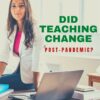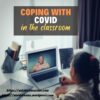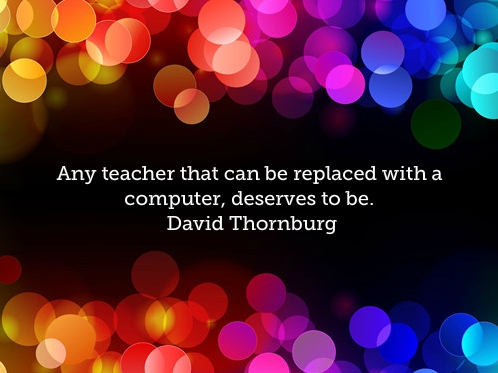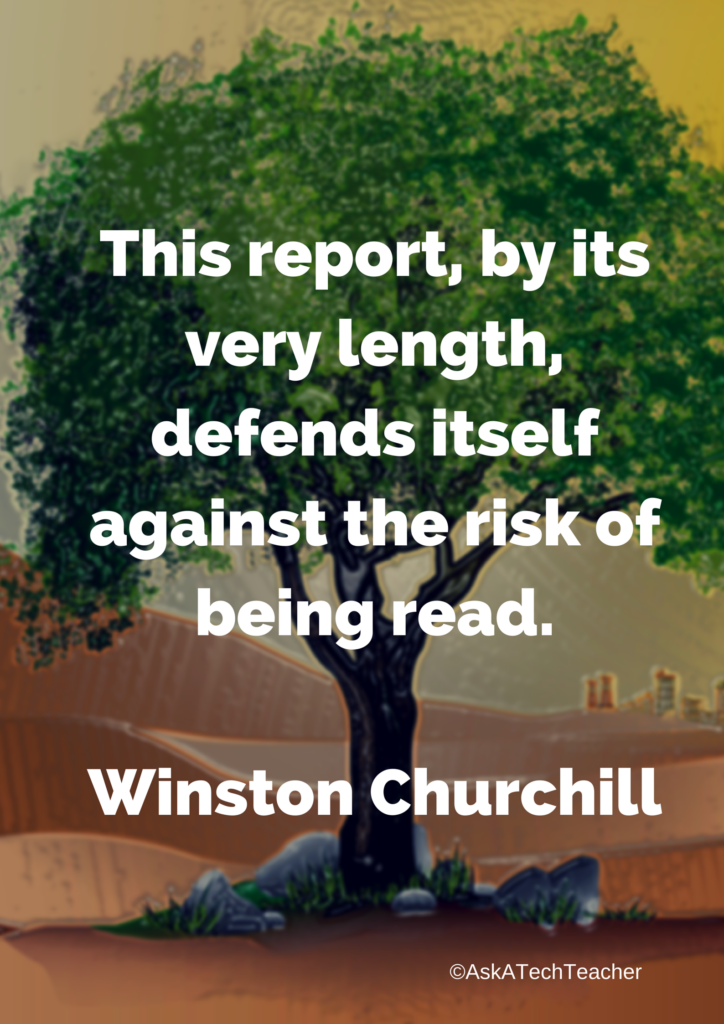
Year: 2022
What You Might Have Missed in March–What’s up in April
Here are the most-read posts for the month of March
- Social Media or COVID: Which is more dangerous to students?
- 5 (free) Posters about Learning
- Websites that add sparkle (and learning) to Spring
- Guiding Students through the Crisis in Ukraine
- A Lesson Plan for Addressing What’s in the News
- Invention Convention is coming
- Celebrate Pi Day and Maths Day
- Using VR to Visualize Complex Information
- 23 Websites on Biomes, Habitats, Landforms
- 7+ Websites to Teach Financial Literacy
Here’s a preview of what’s coming up in April:
- Preparing for College or Career
- How to Become a Tech Teacher
- Tech Tools for Reading Fluency
- Resources to Teach Taxes
- Easter Websites
- Earth Day Activities
- Digital Literacy
- Create a Macro
- Websites on Architecture/Engineering

Share this:
- Click to share on Facebook (Opens in new window) Facebook
- Click to share on X (Opens in new window) X
- Click to share on LinkedIn (Opens in new window) LinkedIn
- Click to share on Pinterest (Opens in new window) Pinterest
- Click to share on Telegram (Opens in new window) Telegram
- Click to email a link to a friend (Opens in new window) Email
- More
National Library Week April 3-9
National Library Week is April 3-9, 2022. It allows us to promote our local libraries and their workers. Find more about here at the American Library Association.
Because I know most of you online only, I thought I’d share my favorite online libraries with you:
For Children
- Aesop for Children–collection of fables
- Actively Learn–add PDFs of your choice to a library that can be annotated, read, and shared.
- Audio Books–apps for books purchased through Audio Books (and free ones)
- Bookopolis–focused on student reading
- Books that Grow–read a story at many different reading levels
- Class Literature
- Epic–a reading library for kids, 15,000 books; most digital devices
- RAZ Kids–wide variety of reading levels, age groups, with teacher dashboards
- Reading Rainbow–library of books; free to try
- Signed Stories–beautiful stories in sign language
- Tumblebooks (fee)–focused on student reading
For All Ages
- Free Books–download any of our 23,469 classic books, and read
- Great Books Online by Bartleby
- IBooks–amazing way to download and read books.
- International Library
- Internet Archive— Internet Archive offers over 12,000,000 freely downloadable books and texts. There is also a collection of 550,000 modern eBooks that may be borrowed by anyone with a free archive.org account.
- Kindle–read ebooks, newspapers, magazines, textbooks and PDFs on an easy-to-use interface.
- Librivox–free public domain audio books
- Loyal Books
- Many Books–Over 33,000 ebooks that can be browsed by language, author, title.
- Online Books Page
- Open Library
- OWL Eyes–for the classics
- Unite for books (free) — gorgeous, easy-to-navigate site.

Share this:
- Click to share on Facebook (Opens in new window) Facebook
- Click to share on X (Opens in new window) X
- Click to share on LinkedIn (Opens in new window) LinkedIn
- Click to share on Pinterest (Opens in new window) Pinterest
- Click to share on Telegram (Opens in new window) Telegram
- Click to email a link to a friend (Opens in new window) Email
- More
Subscriber Special: Group Discount on Summer PD
Every month, subscribers to our newsletter get a free/discounted resource to help their tech teaching.
April 4th-6th:
20% discount on Early Bird sign-up for online professional development offered on your schedule:
20 Webtools in 20 Days
with coupon code KZJ8MBNV
[gallery type="slideshow" ids="55473,55475,55476,48502,55477,55479,55480"]What You Get With Enrollment
Share this:
- Click to share on Facebook (Opens in new window) Facebook
- Click to share on X (Opens in new window) X
- Click to share on LinkedIn (Opens in new window) LinkedIn
- Click to share on Pinterest (Opens in new window) Pinterest
- Click to share on Telegram (Opens in new window) Telegram
- Click to email a link to a friend (Opens in new window) Email
- More
World Backup Day–March 31st
March 31st is called World Backup Day. At least once a year, backup your data files to an external drive (like a flash drive). This is one that isn’t connected to your local computer so can’t be compromised if you get a virus. It’s good to always backup data to cloud drives or a different drive on your computer but once a year, do the entire collection of data files to what is called an ‘air gap’ drive–one that is separated from any internet connection.
How to do this
There are various ways to back up your data. You can back up your data to an external device or a cloud-based backup service, or to both. You might even make more than one backup to external storage devices and keep the two copies in different places (providing protection and access to your data even if one of the backup devices is destroyed or inaccessible. Preserving your valuable documents and images for future access and use requires planning, as well as the use of automatic backup services.
To back up PC/Windows, use Windows Backup:
-
- Click the start button.
- Go to Control Panel
- Select ‘Backup and Restore’
- Select ‘Backup Now’
From there, select a drive with sufficient space and start. Be forewarned: If you have a lot of data, it takes a while. You can work on your computer while it’s backing up; it’ll just be slower.
Mac: Use the Time Machine tool.
Chromebook: No need. Everything is saved to the cloud. Now if you want to backup your cloud, use a service like Backupify.
Share this:
- Click to share on Facebook (Opens in new window) Facebook
- Click to share on X (Opens in new window) X
- Click to share on LinkedIn (Opens in new window) LinkedIn
- Click to share on Pinterest (Opens in new window) Pinterest
- Click to share on Telegram (Opens in new window) Telegram
- Click to email a link to a friend (Opens in new window) Email
- More
Has Teaching Changed since the Pandemic?
Ask a Tech Teacher contributor, Christian Miraglia, wrote an interesting article on changes in teaching since the pandemic. I think you’ll find a lot to relate to:
Has Teaching Changed Since the Pandemic?
March 13, 2019, for many educators in California and nationwide, was a day that will forever be etched in their memories. It was the day that many school districts closed temporarily, or so they thought, due to the spread and uncertainty of COVID-19. What nobody could have seen was that these closures would become more permanent and reshape the educational landscape for years to come. Changes to daily instruction have become the norm as students were absent due to illness, teachers were absent due to COVID-19 exposure or their children having been infected or exposed, in-face instruction shifting to online and then back to face-to-face.
Recently I listened to K-12 educators at a session hosted by a local university designed to have teachers meet and share their experiences from the past two years. The output of emotions from these brave educators who detailed what it is like to teach during this challenging time was gut-wrenching.
The resiliency of these educators is to be commended as they navigated the daily challenges of policy changes, students coming and leaving, the caring for themselves and their children. In listening to them, a common theme resonated from the group, the value of networking.
Share this:
- Click to share on Facebook (Opens in new window) Facebook
- Click to share on X (Opens in new window) X
- Click to share on LinkedIn (Opens in new window) LinkedIn
- Click to share on Pinterest (Opens in new window) Pinterest
- Click to share on Telegram (Opens in new window) Telegram
- Click to email a link to a friend (Opens in new window) Email
- More
7+ Websites to Teach Financial Literacy
 When kids read that America’s $30 trillion+ debt is accepted by many experts as ‘business as usual’, I wonder how that news will affect their future personal finance decisions. Do they understand the consequences of unbalanced budgets? The quandary of infinite wants vs. finite dollars? Or do they think money grows on some fiscal tree that always blooms? The good news is: Half of the nation’s schools require a financial literacy course. The bad new is: Only half require a financial literacy course.
When kids read that America’s $30 trillion+ debt is accepted by many experts as ‘business as usual’, I wonder how that news will affect their future personal finance decisions. Do they understand the consequences of unbalanced budgets? The quandary of infinite wants vs. finite dollars? Or do they think money grows on some fiscal tree that always blooms? The good news is: Half of the nation’s schools require a financial literacy course. The bad new is: Only half require a financial literacy course.
I’ve noticed news stories about schools adding financial literacy to the High School course load (yay!). If your school doesn’t teach personal economics but would like to, there are many online sites that address the topic as mini-lessons. Some are narrative; others games. Here are some I like. See if one suits you:
Banzai
Banzai is a personal finance curriculum that teaches high school and middle school students how to prioritize spending decisions through real-life scenarios and choose-your-own adventure (kind of) role playing. Students start the course with a pre-test to determine a baseline for their financial literacy. They then engage in 32 life-based interactive scenarios covering everything from balancing a budget to adjusting for unexpected bills like car trouble or health problems. Once they’ve completed these exercises, they pretend that they have just graduated from high school, have a job, and must save $2,000 to start college. They are constantly tempted to mis-spend their limited income and then must face the consequences of those actions, basing decisions on what they learned in the 32 scenarios. Along the way, students juggle rent, gas, groceries, taxes, car payments, and life’s ever-present emergencies. At the end, they take a post-test to measure improvement in their financial literacy.
The program is free, takes about eight hours (depending upon the student), and can include printed materials as well as digital.
Share this:
- Click to share on Facebook (Opens in new window) Facebook
- Click to share on X (Opens in new window) X
- Click to share on LinkedIn (Opens in new window) LinkedIn
- Click to share on Pinterest (Opens in new window) Pinterest
- Click to share on Telegram (Opens in new window) Telegram
- Click to email a link to a friend (Opens in new window) Email
- More
Coping with COVID in the Classroom

A lot of teachers are also authors. In an effort to spotlight their two hats, I feature teacher-authors on both my writing and education blogs. Guests can write about any topic they’d like as long as it revolves around those skills.
Today, I’d like to introduce Anne Clare, a teacher as well as a historical fiction author. Anne Clare is a native of Minnesota’s cornfields and dairy country. She graduated with a BS in Education in 2005 and set out to teach in the gorgeous green Pacific Northwest, where she and her husband lived. She also serves as a church musician, singing in and occasionally directing choirs, playing piano, organ, and coronet (the last only occasionally, when she forgets how bad she is at it.) After the birth of her second child, she became a stay-at-home mom, and after the birth of the third she became reconciled to the fact that her house would never be clean again, which allowed her to find time to pursue her passion for history and writing while the little people napped. Although she’s back to teaching, she continues to write historical fiction and to blog about WWII history, writing, and other odds and ends at thenaptimeauthor.wordpress.com.
I reviewed her amazing book, Where Shall I Flee, (click for my review and a purchase link) about the battle in Italy during WWII from the perspective of a female nurse. Today, I’m excited to share her story of teaching through the pandemic. With not only apocryphal but statistical stories about the damage done by the pandemic to student learning, I was eager to read about this through the eyes of a teacher in the trenches. I think you’ll enjoy this:
Coping with COVID in the Classroom
 I’ve always found that teaching is a profession that requires some flexibility. Since March of 2020, “flexibility” doesn’t seem like quite a strong enough word for the mental gymnastics required in maintaining any kind of workable learning environment. All of the teachers I know have their own stories of Covid craziness. Here are a few of mine.
I’ve always found that teaching is a profession that requires some flexibility. Since March of 2020, “flexibility” doesn’t seem like quite a strong enough word for the mental gymnastics required in maintaining any kind of workable learning environment. All of the teachers I know have their own stories of Covid craziness. Here are a few of mine.
The First Round
As soon as we heard that our state was going into full lockdown, my school’s faculty started looking for online options. I teach in a small “church school” with just over a hundred students. Small size has its own challenges, but when it came to pivoting to a new teaching plan, it allowed us to adapt quite quickly. Over Spring Break we set up Google Classroom pages, learned how to do Zoom, and created packets of papers for students’ families to pick up and drop off outside the school weekly. By the time break was over, we were ready.
Sort of.
Technical difficulties, struggling students, and the stress of a total change of lifestyle made online learning challenging.
Then there were difficulties with the physical space. My husband worked from home in our bedroom while my eldest daughter did her 4th grade work in her room, my son worked on first grade in his, and my youngest wrapped up her Kindergarten year at our kitchen table, occasionally weeping over the ipad when she couldn’t find the correct sheet. Meanwhile, I tried to record lessons in such a way as to keep my students accountable, tried to keep up with online correcting, and tried to be there to assist my children as needed.
While my faculty and I adapted to provide the best learning situation for our students that we could, I didn’t complain when we decided to end the school year early. It made sense—the loss of sports and extra curriculars meant that we finished our curriculum ahead of schedule anyway. Perhaps, after summer, things would return to normal.
The Long Haul
As I approached the 2020-2021 school year, I hoped (as I’m sure many did) that maybe things could go back to normal. They didn’t.
Share this:
- Click to share on Facebook (Opens in new window) Facebook
- Click to share on X (Opens in new window) X
- Click to share on LinkedIn (Opens in new window) LinkedIn
- Click to share on Pinterest (Opens in new window) Pinterest
- Click to share on Telegram (Opens in new window) Telegram
- Click to email a link to a friend (Opens in new window) Email
- More
7 websites to teach fake news
We wrote about fake news earlier this week (How to defeat fake news–one teacher’s ideas). Here are additional resources you’ll find helpful in teaching about this topic:
- Fake News game— from BBC
- How to spot fake news — a video
- Interview with a fake news creator
- Make your own Fake News–with the Inspect tool (video); idea: change a website; ask students if they can tell it’s now fake
- Spot the Troll–recognize fake SM accounts
- TEDEd–how to choose your news
- Why People Fall for Misinformation--Video)
Share this:
- Click to share on Facebook (Opens in new window) Facebook
- Click to share on X (Opens in new window) X
- Click to share on LinkedIn (Opens in new window) LinkedIn
- Click to share on Pinterest (Opens in new window) Pinterest
- Click to share on Telegram (Opens in new window) Telegram
- Click to email a link to a friend (Opens in new window) Email
- More
How to defeat fake news–one teacher’s ideas
Differentiating between reliable websites, books, information has always been a topic in classrooms. Kids tend to think if a site is at the top of the Google hit list, it is the most reliable. It requires teaching to explain why that isn’t true. What has increased in the last decade is the prevalence of ‘fake new’, what used to be called ‘yellow journalism’, where news is presented ina way that garners views and clicks rather than disseminates the truth.
Education Week tackles this issue as a teacher describes efforts to defeat fake news online. Here the article:
TikTok Is Feeding My Students Fake News About Ukraine. How Can Truth Win?
The roots of misinformation about Russia’s invasion stretch back further than social media
Students prefer images instead of written analysis of world events, which Chris Doyle, a teacher at a Connecticut school, describes as “TikTok over The New York Times.” Yet, Doyle writes in this blog post that imagery can be deceptive, fabricated and even outright propaganda, as Doyle works to debunk them, leading to concerns about the information students are consuming.
Ask a Tech Teacher has quite a few articles and resources on this topic. Here are a few:
Share this:
- Click to share on Facebook (Opens in new window) Facebook
- Click to share on X (Opens in new window) X
- Click to share on LinkedIn (Opens in new window) LinkedIn
- Click to share on Pinterest (Opens in new window) Pinterest
- Click to share on Telegram (Opens in new window) Telegram
- Click to email a link to a friend (Opens in new window) Email
- More
5 (free) Posters on Teaching II
Every month, we’ll share five themed posters that you can share on your website (with attribution), post on your walls, or simply be inspired.
This month: Teaching II
Share this:
- Click to share on Facebook (Opens in new window) Facebook
- Click to share on X (Opens in new window) X
- Click to share on LinkedIn (Opens in new window) LinkedIn
- Click to share on Pinterest (Opens in new window) Pinterest
- Click to share on Telegram (Opens in new window) Telegram
- Click to email a link to a friend (Opens in new window) Email
- More





















































